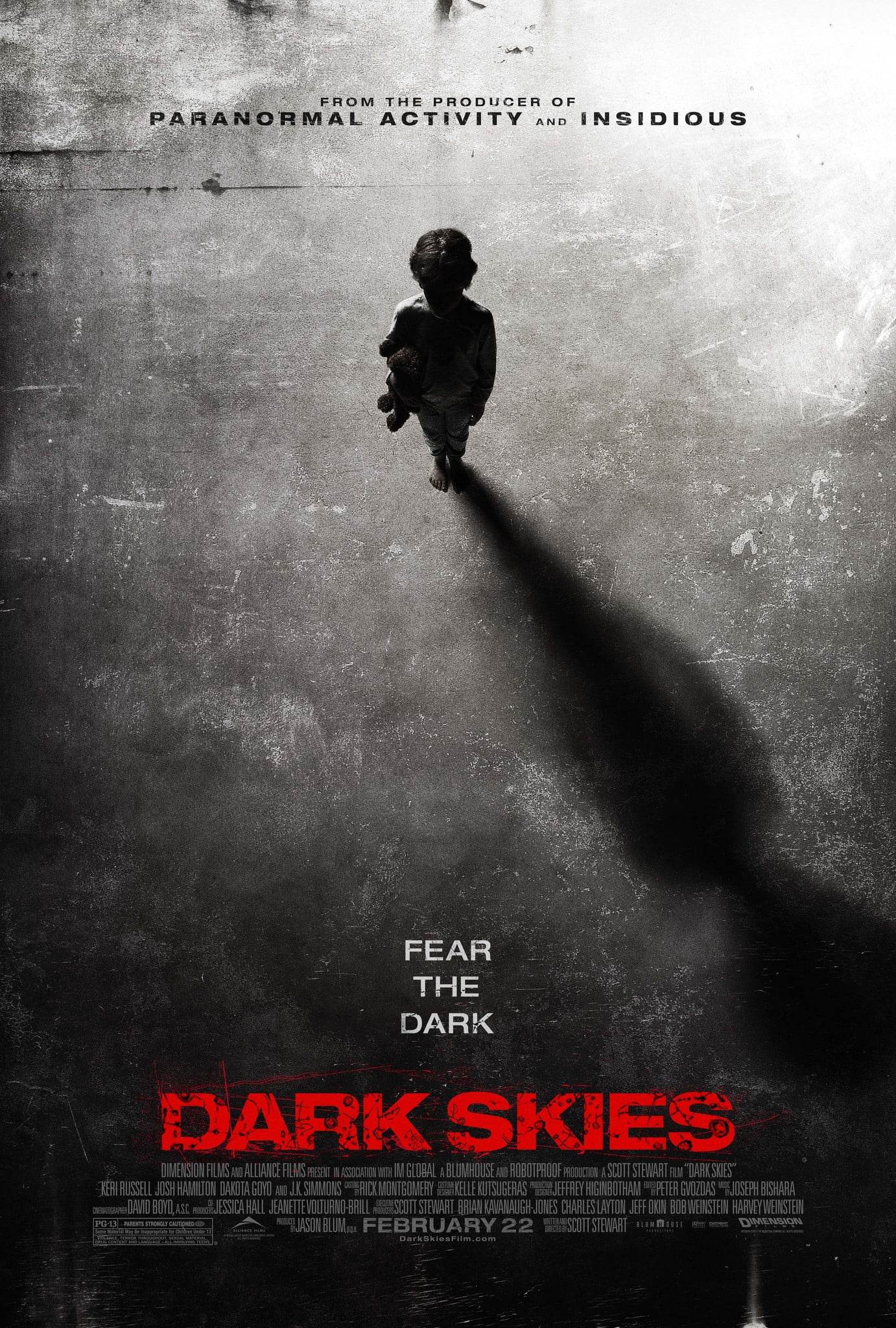Review of Dark Skies (2013)
It’s been a while since I’ve stumbled across a sci-fi horror film that felt worth my time, but Dark Skies (2013) changed that. The pacing is slow, and it’s not packed with high-octane thrills, but it leaves a lasting impression—something I can’t say for films like Battle for Skyark (2015) or pure horror flops like Exciter (2015) and The Gallows (2015). Those had weak scripts that left me frustrated, not entertained. I’m picky about my horror, and Dark Skies didn’t disappoint.
Story
The Barrett family—mom Lacy, dad Daniel, teenage son Jesse, and young Sammy—lives on a quiet suburban street in an unnamed American city. Daniel is unemployed, leaving Lacy, a real estate agent, to shoulder the family’s finances. Their sons share a close bond, chatting via walkie-talkies from their beds. Strange events soon disrupt their lives: kitchen items are rearranged into bizarre patterns at night, the home alarm blares as every entry point is breached simultaneously, and hundreds of birds crash into their house. Sammy suffers a seizure at the park, and Lacy is shaken by the chaos.
One night, Lacy hears a noise from Sammy’s room and sees a shadowy figure looming over his bed. When she flips on the light, the room is empty, and Sammy is found wandering outside, unaware of how he got there. Lacy, Daniel, and Jesse each experience blackouts, waking with no memory of what happened. At a pool party, Sammy is found with strange marks on his body, and after Jesse collapses in the woods, doctors discover geometric patterns on him, prompting a call to Child Protective Services.
Desperate for answers, Lacy scours the internet and uncovers articles linking their experiences to UFOs and alien abductions. Daniel installs security cameras, and footage reveals three dark figures standing over their beds as they sleep. Convinced an extraterrestrial force is at play, the Barretts turn to Edwin Pollard, an expert who calls these beings “the Greys.” Pollard warns that the Greys often target children for abduction, with Sammy likely their focus. He urges the family to protect him at all costs.
Arming themselves, Daniel buys a shotgun, and Lacy adopts a guard dog. On July 4th, they board up the house, eat dinner, and watch fireworks on TV, reminiscing about happier times. Suddenly, the TV fills with static, lights flicker, and the dog barks furiously. Daniel ushers Lacy and the boys to Jesse’s room, gripping his gun. A blinding light floods the house. Upstairs, Lacy stands guard with a kitchen knife, instructing the boys to keep the door shut. The power cuts out, and Lacy hears the TV in her bedroom turn on. Investigating, she’s trapped inside as a figure lurks behind her. Daniel barricades himself with Jesse and Sammy in another room, huddling together.
Jesse blacks out, hallucinating his father’s suicide and his mother’s bloodied body. Chasing a vision of Sammy, he wakes in the upstairs hallway, where the Greys appear. In a flash of light, Jesse vanishes, leaving the family helpless. Three months later, Lacy and Daniel are suspects in Jesse’s disappearance and have moved to an apartment. Pollard clips a news article about Jesse, adding it to a wall of missing children. Sorting through old belongings, Lacy finds Jesse’s childhood drawings depicting the Greys surrounding him. She realizes too late that Jesse, not Sammy, was the Greys’ target all along. A walkie-talkie crackles nearby, and Lacy and Sammy hear Jesse’s faint voice calling Sammy’s name.
Script
The script unfolds deliberately, placing the family at the mercy of a mysterious threat that treats them like lab rats. It builds suspense by keeping viewers in the dark alongside the characters. There’s no convenient escape—no family unity or expert savior like Edwin Pollard swooping in to save the day. When the Barretts consult Pollard, it’s a turning point: they finally accept something bizarre is happening, after doubting themselves, each other, and even their neighbors and police. Pollard offers no rescue, only the grim truth that they must fend for themselves.
The script is near-excellent (I’d give it an 8/10). Everything holds together well—except for the background music—making Dark Skies a refreshing break from the sloppy sci-fi horror I’ve endured.
Tension and Horror
Unlike most horror films that pile on relentless scares or cheap jump scenes, Dark Skies takes a slower, psychological approach. Instead of gore or predictable chases, it leans on inexplicable events—objects rearranged, alarms triggered, birds crashing—to build dread. This restraint is what I admire most. It avoids the tired tropes of sci-fi horror, using the characters’ confusion and fear to unsettle the audience. The result is a creeping sense of unease that lingers.
A good sci-fi horror film should evoke fear of the unknown and the vastness of space. Tension and terror are critical, yet most films in this genre fall short. Extraterrestrial (2014) hits the baseline standard, but Dark Skies exceeds it, standing out among its peers. Its weakness? The horror isn’t intense. It prioritizes psychological dread over visceral shocks, so if you crave blood or aggressive scares, this might not satisfy.
Soundtrack
With so much focus on psychological tension, the soundtrack feels underwhelming. It’s forgettable, failing to amplify the fear or leave an impression. In horror, music often sets the mood, but here it’s barely noticeable. This could be intentional—psychological horror sometimes skips heavy scoring—but it’s a missed opportunity to heighten the atmosphere.
Overall
Dark Skies isn’t like other sci-fi horror films, which often lean on violence, monsters, or shaky plots. It portrays humans as alien experiments, unfolding slowly from the victims’ perspective as they’re stalked and outmatched. The deliberate pace may test patience, and it lacks the explosive climaxes of mainstream horror, with some moments feeling slightly unfocused. Still, it delivers a unique, chilling experience that sets it apart. If you’re after thoughtful, unsettling sci-fi horror, Dark Skies is well worth your time.


